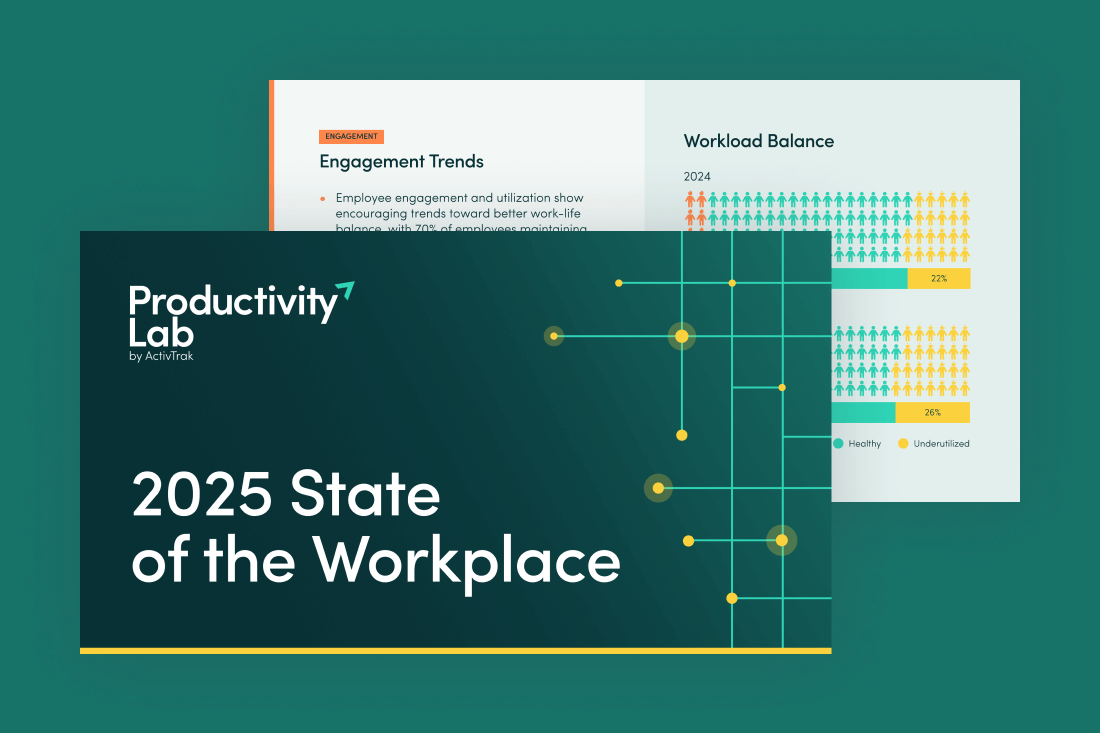Talent analytics is a relatively new and increasingly important way businesses harness data to gain a competitive edge. Also known as HR analytics or people analytics, talent analytics is a way to use data to make informed decisions about your workforce. By extracting meaningful insights from the huge amounts of employee data your systems gather, talent analytics empowers you to more effectively drive recruitment, develop talent and create more powerful human resources strategies. Learn more about talent analytics and how to implement them in your organization in our complete guide.
What is talent analytics?
Talent analytics is the process of using data, statistical methods and predictive modeling techniques to make human resources decisions, including current workplace policies and future workforce planning. The process includes gathering and analyzing data from your organization’s performance systems, including training and development, employee engagement and hiring and retention programs. Although it will be a different process and dataset for every organization, to function effectively, a talent analytics solution needs to provide meaningful insights so leaders, managers and employees can make informed, data-driven decisions that align with organizational objectives.
The role of talent analytics in human resources
In the past, human resources departments often relied on intuition and experience to make important decisions about talent management. However, using talent analytics, HR professionals use data to gain greater insights into their workforce. By embracing talent analytics, HR departments drive better hiring decisions, improve employee engagement and retention, identify skills gaps and maximize overall business performance.
Types of talent analytics
There are four main talent analytics methods and your organization can use one or several of them to create the right system for your goals and organizational objectives.
1. Descriptive analytics
Descriptive analytics describes your organization’s current employee metrics. These metrics are the simplest and easiest to gather from basic human resources tools. The data collected includes information describing your current workforce, such as:
- Current headcount
- Numbers of full-time, part-time or contract employees
- Retention percentages
This basic information is useful for auditing purposes or to understand your current workforce, but won’t inform predictive models or goal-setting on its own.
2. Diagnostic analytics
While descriptive analytics describes your current workforce, diagnostic analytics takes that descriptive data and asks why your current workforce is that way to diagnose issues. For instance, you may ask why it takes so long for potential employees to accept offers or why employees are leaving your company.
3. Predictive analytics
Predictive analytics models previous trends and current forces to create goals and workforce planning models to develop the talent force your organization wants to have in the future. HR professionals also use predictive analytics to create talent development plans for individual employees or plan for headcounts based on market or industry trends.
4. Prescriptive analytics
Prescriptive analytics takes predictive analytics a step further to recommend optimal workforce policies and stop negative trends before they become long-term patterns. While predictive analytics says “this might happen,” prescriptive analytics says, “you should do this to encourage or discourage that from happening.”
Pros of talent analytics
Using talent analytics offers many benefits to improve your organization’s bottom line and increase your chances of long-term success.
Enhances recruiting strategies
Talent acquisition teams equipped with talent analytics better attract and retain top talent with focused strategies based on real data rather than guesses or feelings. With information about cost per hire, time to hire and offer acceptance rates, your team will spot issues or strong points within your current recruiting processes. With predictive analytics, your team can make changes to recruiting policies that will build your talent pool through fluctuating market conditions and increasing competition.
Provides predictive analytics for employee performance
HR analytics affects every aspect of your human resources policies, from recruiting and hiring to retention. Understanding why employees leave, what affects employee satisfaction and how employee productivity works in your organization leads to better strategies for both current and future employees.
Allows for better-informed decision-making
With the right talent analytics tools and methods, your managers, HR leaders and executive teams are empowered to create workforce plans and changes to HR processes with confidence. Hard data makes it easier to create and get buy-in when planning new strategies, and change management data allows your organization to track real-time results to see if it’s having the intended effect.
Cons of talent analytics
In spite of the clear benefits of talent analytics, there are potential downsides that your organization will have to consider. Luckily, many of these issues can be solved or avoided altogether by selecting the right analytics technology and using best practices to implement the system.
Increases risk of data overload
When you start looking at data for any system, there’s a good chance you’ll get more than you could ever use. Worse, it’s often difficult to find any meaningful insights from all that data. The right system will deliver more than just raw numbers to your analytics leaders; it will also tell you the information you need to make decisions and understand the story behind the numbers.
Creates more work for HR teams
Introducing any new system or technology inevitably creates more work, and if your People team already feels overwhelmed, they may be reluctant to integrate analytics into their existing processes. Finding tools and technology that automate processes and provide meaningful insights mitigates this issue by providing value rather than busywork and increases buy-in from the HR team.
How to use talent analytics effectively
While every organization will need different metrics, tools and methods to achieve their HR analytics goals, the process for implementing a talent analytics system is generally the same.
1. Define the objective
Determine why you need talent analytics and what you want out of them. Are you looking to increase employee retention? Do you want to identify high-performance employee behaviors? Do you want to decrease recruiting expenses? Engage leadership and HR team members to nail down your goal for implementing a talent analytics system.
2. Decide on which type(s) of talent analytics
Based on the four talent analytics types (descriptive, diagnostic, predictive and prescriptive), figure out which best fits your defined objective. You may use a combination of all four types or limit your needs to descriptive analytics, especially if you’re just starting out with HR data analytics.
3. Define relevant metrics
Your organization will need to decide which metrics from the data you’re collecting are worth focusing on. This depends, again, on your objectives and goals.
4. Identify analytics tools
Based on your objective and relevant metrics, find the right analytics tools for your organization. You may already have reams of HR data from payroll and timekeeping systems and will need to ensure any new systems can integrate that data as necessary. Research which systems offer employee privacy protections, real-time data and customizable dashboards. You’ll need to consider your organization’s budget as well as how easy-to-use a new system will be and who will need to learn how to use it. Finally, consider any technology firm’s reputation and customer reviews to determine if their tool is the best fit for your project.
5. Train HR professionals
Once you’ve selected the technology you’ll use for collecting and analyzing talent data, you’ll need to train HR teams on these systems. They need to understand not only how to use the tools, but how the tools will help simplify or improve their roles and affect the organization’s goals. While it’s a great idea to train as many members of the HR team as possible on the new tool, time and other resources may limit the training to a few key individuals.
6. Gather and analyze data
Once employees are trained on the new systems and their purpose, it’s time to set the system in motion. Ensure that the tools have access to the relevant data sources, such as other technology or tools that your team uses, and that your dashboards and reporting make sense for the information you wish to understand.
7. Update policies based on new data
If your system is functioning properly, the new data and analysis will provide insights into how you should change your HR systems or policies, or how to optimize what’s already working. Integrate this information into all aspects of your organization’s talent management program and create new policies based on your goals.
8. Adapt and grow
Even if you decide to adopt descriptive analytics as your only talent data project, talent analytics isn’t a one-time project with a set end date. As you adopt new HR practices, new data will come in regarding how those processes work and what could be improved. Use your talent analytics system to create continuous improvement and set new goals for your organization’s workforce.
Examples of talent analytics
While talent analytics is relatively new, companies are already using tools to improve their recruiting, hiring and retention systems.
Fam Brands, an apparel designer and manufacturer, used employee productivity metrics from ActivTrak to determine whether or not their employees were more productive when working from home. The company found that employees were more productive working from home, which informed their return-to-office policy. The company expanded their recruiting efforts to a nationwide pool of applicants across the U.S. and changes to their policies increased retention rates across the board. They also learned which employees were overworked and at greater risk of burnout which led the organization to invest in new automation tools to reduce work hours while adding more team members.
Leading independent insurance broker York International Agency uses analytics from ActivTrak to understand productivity inside their firm. Leveraging the software’s integration with MS Teams, the company has been able to create training programs to help struggling employees manage their time and productivity more effectively while increasing trust and accountability. Analytics data also informed changes to communications policies around email based on how much time employees were spending in the app.
Collect and use talent analytics with ActivTrak
Access a wealth of talent analytics to optimize your workforce with ActivTrak’s HR workforce analytics. Analyze basic descriptive metrics like capacity and head count to make informed decisions on maximizing office space utilization or return-to-office polices. Use advanced insights such as which employees are top performers and what habits contribute most to their success to train employees on how to replicate that success. Or base your recruiting and hiring efforts to look for those successful traits in candidates to streamline your hiring processes.
Schedule a demo to start transforming your talent analytics with ActivTrak.





